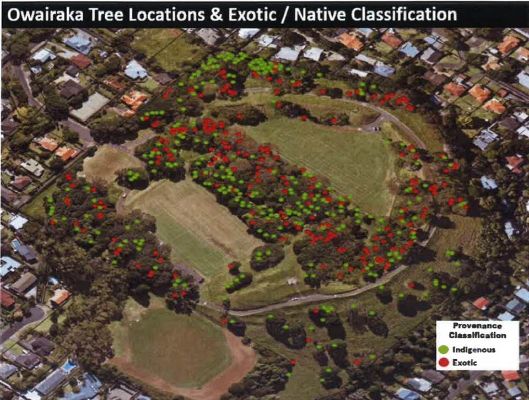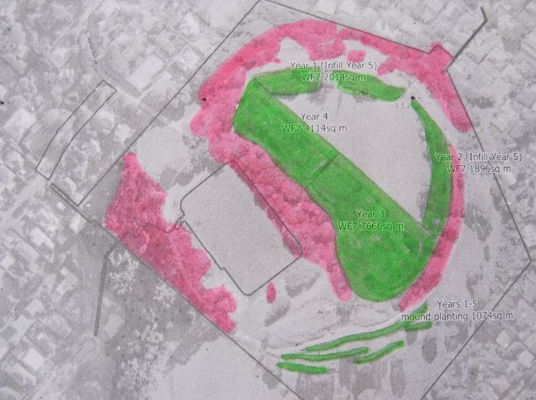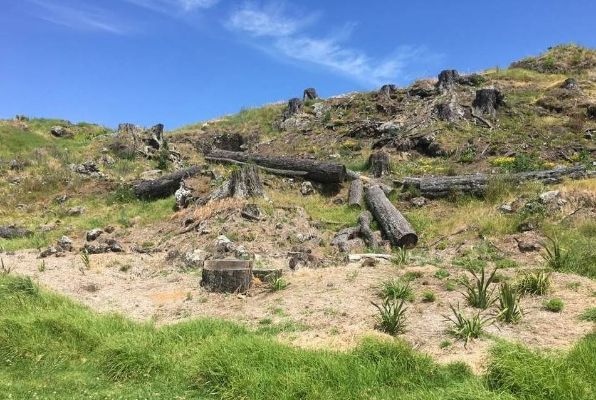DOC Correspondence Expresses Concern About Ōwairaka Tree Felling
Department of Conservation correspondence obtained under the Official Information Act shows concern about the environmental effect of Tūpuna Maunga Authority’s plans to fell 345 healthy, mature exotic trees on Ōwairaka / Mt Albert – nearly half of its tree cover.
In all, the Authority plans to get rid of around 2000 exotic trees from Auckland’s volcanic cones (maunga).
The DoC correspondence was obtained by the Honour the Maunga tree protection group, which has had an ongoing presence on Ōwairaka since November. The group accepts the Authority’s long-term native revegetation plans but questions its environmentally destructive single-phase felling process for achieving that goal.
DoC biodiversity officials expressed similar concerns, stating: “We agree that in the long term, removal of exotic species and replacement with native flora will significantly benefit the ecosystems present on Ōwairaka [but]… oversights have been made with regard to the value of vegetation currently present in terms of its provisioning for native species.”
The officials noted that DoC legally has no grounds to object against the Authority’s actions. However, they encouraged ecologists to look at ecosystems and their landscape values particularly in an urban landscape where vegetation is limited.
The officials also highlighted the importance of mitigating/minimising the effects of vegetation loss and expresses concern about the length of time vegetation takes to become mature and provide for ecosystem functioning.
Honour the Maunga spokesperson Anna Radford says the DoC correspondence supports the group’s own concerns about the environmental effects over the coming 50 – 100 years while new plantings grow to maturity.
She notes that the vast majority of the proposed native plantings on Ōwairaka / Mt Albert’s will be low-growing species such as grasses and sedges, rather than species that will become tall trees.
This is significant in light of a just-released Auckland Council report showing a substantial decrease in the number of tall, mature trees in Auckland.
Ms Radford says many people mistakenly assume Ōwairaka / Mt Albert will be covered in lush green native trees and thriving native birdlife soon after Tūpuna Maunga Authority has destroyed all of the exotics.
“As can be seen at the barren expanses at Mangere and Pigeon Mountains and Mt Wellington, where nearly all of the exotics have been felled, those large trees have largely been replaced by a small number of flaxes and low-growing species, many of which have died. Locals report that many of the native birds have gone and birds such as mynahs have become more common.
Ms Radford says she is concerned that in the maunga tree debate, ecology is being idealised into a simplistic binary equation of native species equals good, introduced equals bad.
Ecosystems are highly complex and inter-connected. That is why the existing native trees and the new plantings – and all the lifeforms that depend upon them - will be adversely affected if all the exotic trees are removed in a short time. Erosion is evident on some of the maunga that have already been stripped of exotic trees. This will likely become an issue on Ōwairaka / Mt Albert and could affect the aquifer that flows out to Western Springs.
“Auckland needs its trees more than ever before - particularly large ones. We are calling on Tūpuna Maunga Authority to put a stop to it plans to fell 2000 much-needed mature trees from Auckland’s maunga.
“Losing thousands of tall mature trees when we already have so few of them is the last thing Auckland needs.”





 Gordon Campbell: On The Public Sector Carnage, And Misogyny As Terrorism
Gordon Campbell: On The Public Sector Carnage, And Misogyny As Terrorism National Maori Authority: Maori Authority Warns Government On Fast Track Legislation
National Maori Authority: Maori Authority Warns Government On Fast Track Legislation NZ Government: Comprehensive Partnership The Goal For NZ And The Philippines
NZ Government: Comprehensive Partnership The Goal For NZ And The Philippines DoC: Canterbury Spotted Skink In Serious Trouble
DoC: Canterbury Spotted Skink In Serious Trouble Te Pāti Māori: Oranga Tamariki Cuts Commit Tamariki To State Abuse
Te Pāti Māori: Oranga Tamariki Cuts Commit Tamariki To State Abuse NZCTU: Inflation Data Shows Need For A Plan On Climate And Population
NZCTU: Inflation Data Shows Need For A Plan On Climate And Population Statistics New Zealand: Annual Inflation At 4.0 Percent
Statistics New Zealand: Annual Inflation At 4.0 Percent


